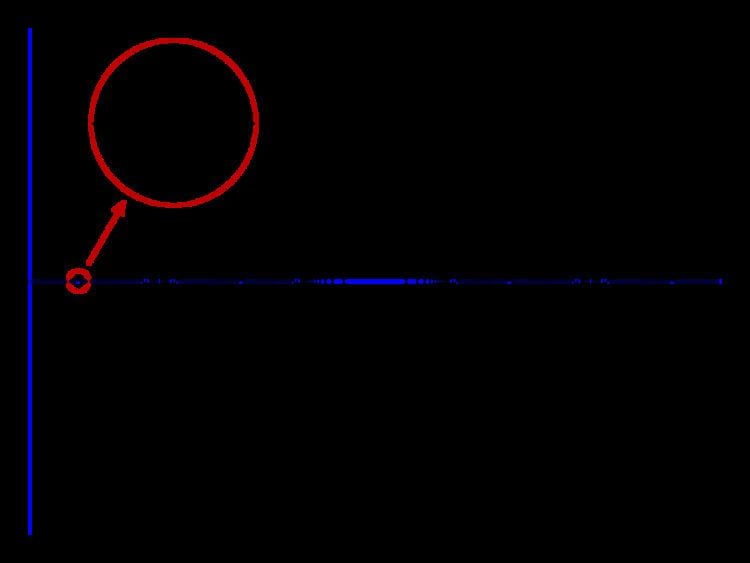 | ||
In mathematics, Volterra's function, named for Vito Volterra, is a real-valued function V defined on the real line R with the following curious combination of properties:
Contents
Definition and construction
The function is defined by making use of the Smith–Volterra–Cantor set and "copies" of the function defined by
Further properties
Volterra's function is differentiable everywhere just as f (as defined above) is. One can show that f ′(x) = 2x sin(1/x) - cos(1/x) for x ≠ 0, which means that in any neighborhood of zero, there are points where f ′ takes values 1 and −1. Thus there are points where V ′ takes values 1 and −1 in every neighborhood of each of the endpoints of intervals removed in the construction of the Smith–Volterra–Cantor set S. In fact, V ′ is discontinuous at every point of S, even though V itself is differentiable at every point of S, with derivative 0. However, V ′ is continuous on each interval removed in the construction of S, so the set of discontinuities of V ′ is equal to S.
Since the Smith–Volterra–Cantor set S has positive Lebesgue measure, this means that V ′ is discontinuous on a set of positive measure. By Lebesgue's criterion for Riemann integrability, V ′ is not integrable. If one were to repeat the construction of Volterra's function with the ordinary measure-0 Cantor set C in place of the "fat" (positive-measure) Cantor set S, one would obtain a function with many similar properties, but the derivative would then be discontinuous on the measure-0 set C instead of the positive-measure set S, and so the resulting function would have an integrable derivative.
